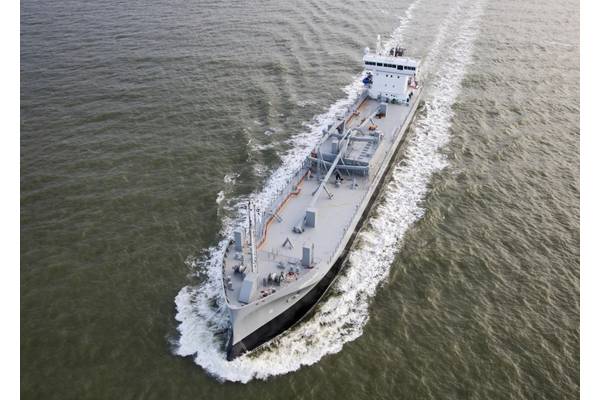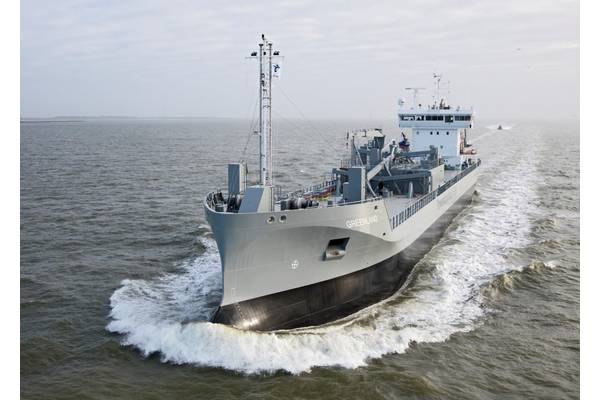LNG-powered Cement Carrier Delivered
Posted by Eric Haun
December 23, 2015

MV Greenland (Photo: Ferus Smit)

MV Greenland (Photo: Ferus Smit)

MV Greenland (Photo: Ferus Smit)
Dutch shipbuilder Ferus Smit announced it has delivered the world’s first LNG-powered cement tanker, MV Greenland.
The delivery was preceded by an extensive program of trials and tests in which the proper working and safety of all systems was verified. Finally on Wednesday, December 23, MV Greenland left the harbor of Delfzijl on her first commercial voyage to Rostock where she will receive her first cement load.
M.V. Greenland is a dedicated cement carrier build for the joint venture JT cement, in which Erik Thun AB cooperates with KG Jebsen Cement from Norway.
According to the shipbuilder, the vessel is the first ever dry cargo vessel with an LNG fuelled propulsion system and LNG tanks integrated inside the hull. The design incorporates a pressurized LNG tank positioned in the foreship.
The cement cargo system consists of a fully automated cement loading and unloading system, based on fluidization of cement by means of compressed air. The cement can be loaded and unloaded fully enclosed through pipes, thus dust-free.






